Day 03, October 16. Depart Quito early and fly to the Galapagos Islands. Visit Bachas Beach on Isla Santa Cruz. Sail towards Isla Genovesa.
After an early breakfast and a brief birding adventure (Southern Yellow-bellied Grosbeak, Rufous-naped Brush-Finch), we flew from Quito to Guayaquil, a coastal city. Along the way, it was mostly cloudy, but we could see the highest peaks in the Andes standing above the clouds. From Guayaquil, we flew 600 miles west out into the Pacific Ocean. Again, most of the trip was cloudy below, but as we dropped below the clouds, the Galapagos Islands came into view. After years of reading about the biology of these islands, it was a thrill to see them in person.
The Galapagos Islands are an archipelago of volcanos, the peaks of which stand above the waves. The islands never have been connected to the mainland, so all of the land plants and land animals out there somehow survived a trip floating 600 miles in cold Pacific waters. When these land plants and animals arrived, they found themselves freed from the constraints of competition and pests, and so evolved freely in diverse and wonderful ways. The story of "Darwin's Finches" probably is best known, but the marine iguanas and tree cactus have wonderful stories too. It is interesting that seabirds and sea mammals also live in the Galapagos, but these creatures seem not fear humans here the way they do in other areas, allowing people to walk right up to them. The Galapagos Islands are in an Ecuadorian National Park, and regulations require humans to stand back at least 3-6 feet from wildlife on the islands. Yes, people must stay 6 feet away from nursing sea lions and nesting boobies.
We landed at the international airport on Baltra Island, and while waiting to exit the plane, I was spotting Darwin's Finches and Magnificent Frigatebirds from the window -- what an amazing place! We were met by our guide while passing customs, and shortly bussed a few minutes to the nearby port. While waiting to board our "panga" (hard-bottomed boat with rubber sides), we were going crazy photographing Darwin's Finches, Galapagos Doves, Smooth-billed Anis, Blue-footed Boobies, lava lizards, and sally-lightfoot crabs.
Riding the pangas out into the harbor, we were thrilled to see Magnificent Frigatebirds and White-Vented Storm-Petrels. Aboard ship (the good ship Eden) by mid-afternoon, we had our first meeting with the crew (meet and greet, rules of the boat, overall itinerary), ate lunch, and set sail for nearby Santa Cruz Island.
We made a "wet landing" at Bachas Beach -- we slid off the panga into the surf and waded ashore. It was amazing enough to land at the airport in the Galapagos, but it was an entirely different experience wading ashore in the footsteps of Darwin and being greeted on the sand by Darwin's Finches (Large Ground Finch), Marine Iguanas, Lava Lizards, and Caribbean Yellow Warblers! Walking along the shore, we saw Blue-footed Bobbies, Brown Noddies, shorebirds, and the nests and tracks of sea turtles. Then we walked over a sand dune to a small lagoon with American Flamingos, White-cheeked Pintails, and a pile of Marine Iguanas!
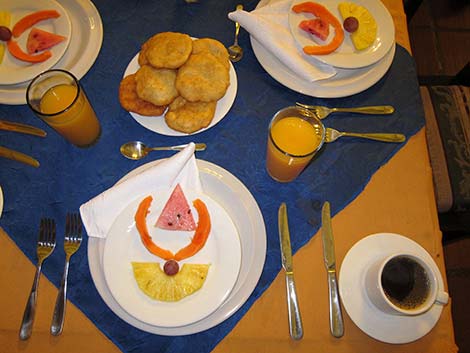 Breakfast appetizer |
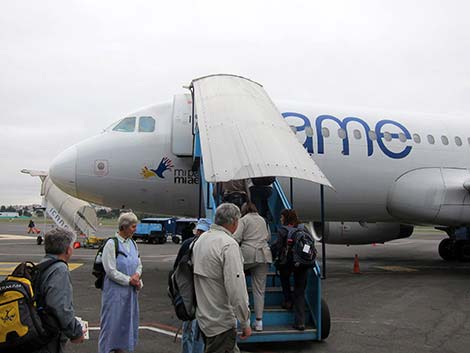 Boarding Tame Airlines in Quito |
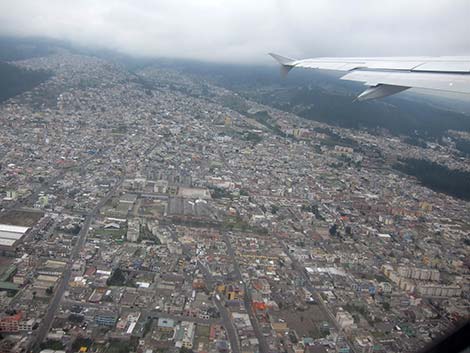 Quito from the air |
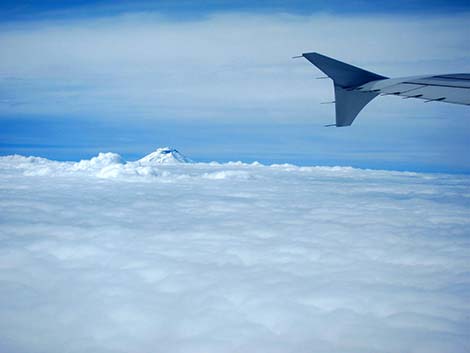 Andean volcano rising above the clouds |
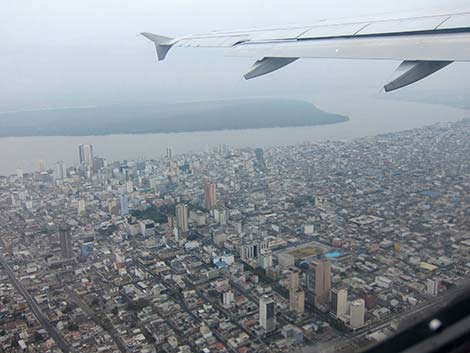 Guayaquil from the air (brief stop over) |
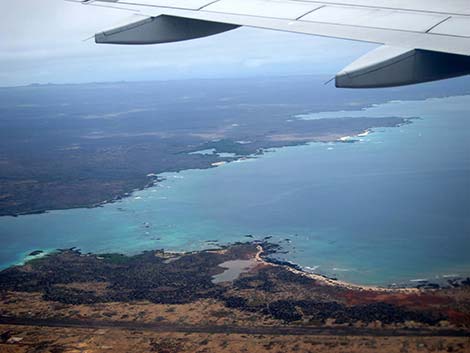 Galápagos Islands from the air (Santa Cruz [top], Baltra [below]) |
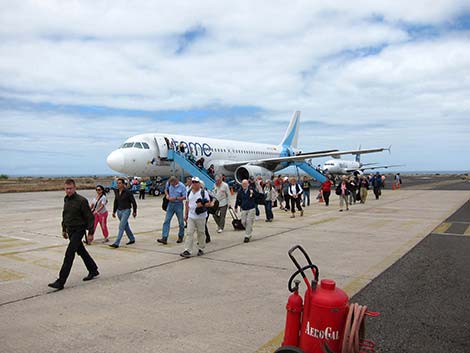 Off the plane on Isla Baltra |
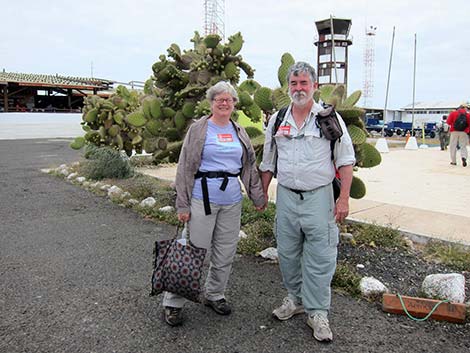 After years of dreaming, we are finally in the Galapagos! |
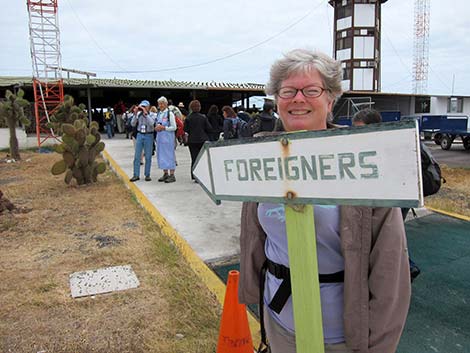 Some signs were in English |
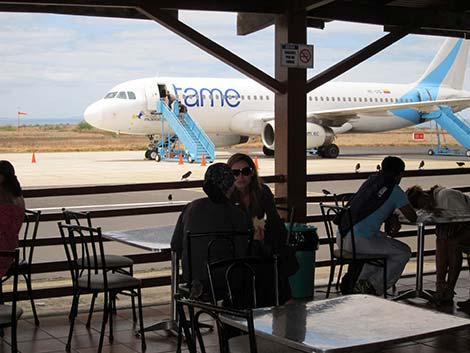 Darwin Finches at the cafe! |
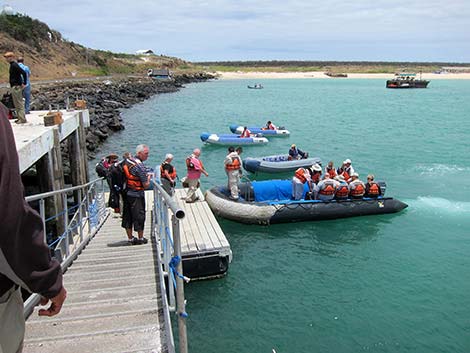 Loading the "panga" in Baltra Harbor |
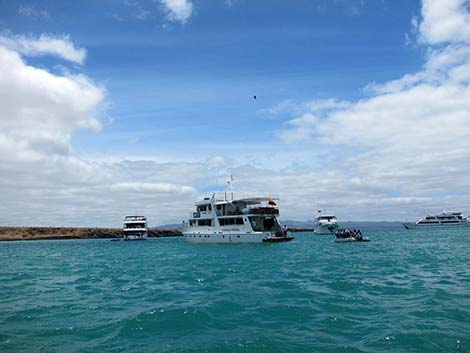 Arriving at the ship (Eden) |
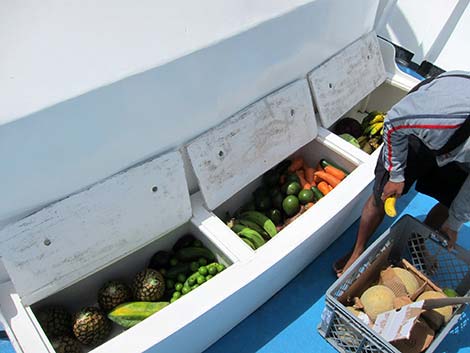 Crew loading fresh and healthy food |
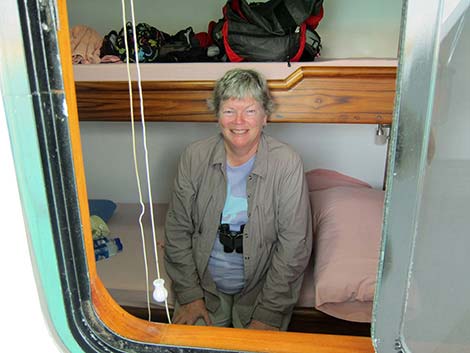 Liz in our cabin (view through window) |
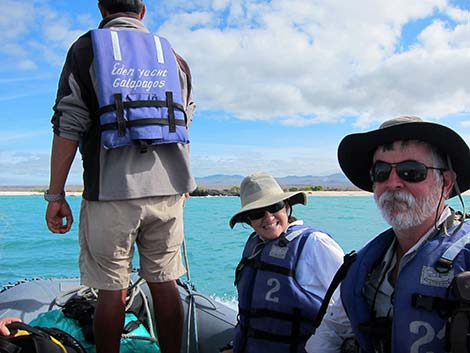 Going ashore in panga at Bachas Beach |
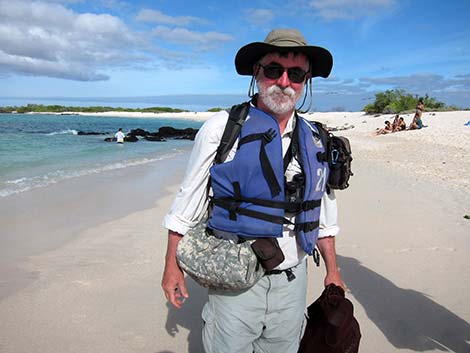 Arriving ashore in the "real" Galapagos |
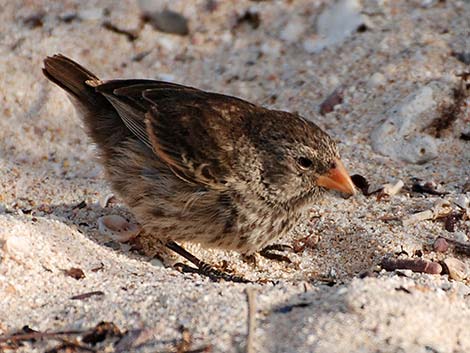 Darwin Finch on the beach! |
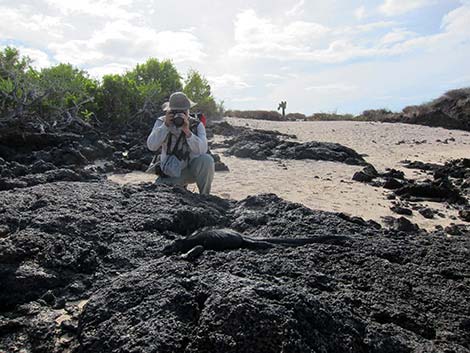 Marine Iguana on the beach! |
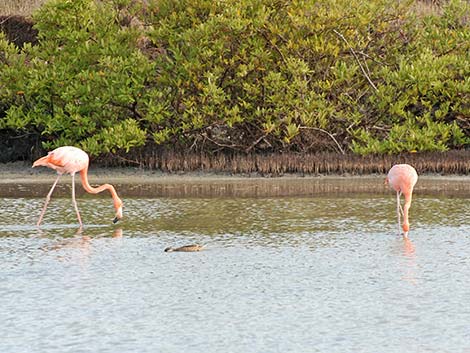 American Flamingo and White-cheeked Pintail in lagoon! |
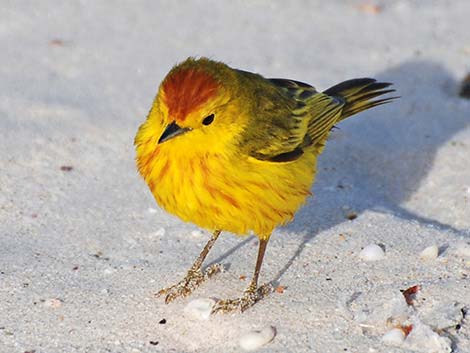 Caribbean Yellow Warbler on the beach! |
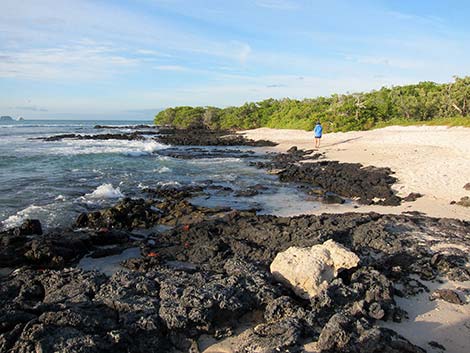 Lava rocks and white coral sand |
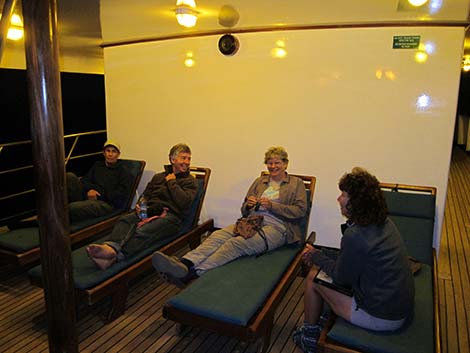 Making friends on the afterdeck at night |
Note: All distances, elevations, and other facts are approximate.
![]() ; Last updated 240223
; Last updated 240223
| Ecuador | Copyright, Conditions, Disclaimer | Home |